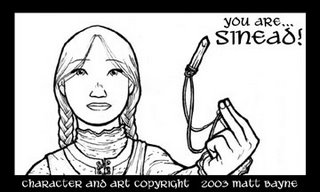As an artist, I make choices all the time – probably in the millions for every single work of art created. Every time the brush hits the canvas I answer the questions: which hue, which tone, which value, which line, which object, which field, which block, which circle? None of it comes immediately – except sometimes. None of it is easy – except sometimes. All of it is the process or rather, The Process of Making Choices. What you view when you go to the gallery or museum is not The Process but The Result – the endgame of all the choices made. The artist has made choices about how she wants us to see the world. It is our obligation as viewer to see and hear what is being communicated. What is the artist’s point of view? What does she want me to know?
I can look at van Gogh’s Irises (
http://www.getty.edu/art/gettyguide/artObjectDetails?artobj=947) and know I am looking at irises. (Although what I am actually looking at is the juxtaposition of paint of different hue, value, and tone that renders a two-dimensional composition with resemblances of the forms we call irises.) Looking at this painting, I imagine van Gogh sitting in the asylum garden, enraptured with the colors of the blue irises. Hypnotized, he can think of nothing else, he can’t even see anything else. His whole world is Iris. How do I know that? I know that because in the painting Irises the forms—irises—consume the whole canvas. There is no Other: no person, no farmhouse, no wagon. Just irises. He wants me to see, to know the irises. They occur as alive and vital in paint. Of course, the actual irises have been dead for over a hundred years, but here in a brown room in the fantastical Getty Museum, I can see them. Or rather I can see what van Gogh chose for me to see of them.
And I can play with what I see. What led van Gogh to make the choices he made? When I look at actual iris stems back home I don’t see that particular color green. I see a yellow-green. As I think more of it, I realize I look at iris stems in the sunlight of the Eastern coast United States and perhaps the light in France yields pthalo green flower stems.
When I look at irises I don’t see them outlined. So why did he choose that? The painting reveals the outlines as essential to my understanding that each iris is an individual that van Gogh wishes to have seen, noticed, and cherished. So by his having made that choice in painting his irises, what can I as viewer infer? What would he want me to think of these irises? At a time when his sanity and cognition were breaking down, what would he want me to think about making choices? Perhaps that we should see, notice, and cherish each one. Is that too sentimental? Too tidy a bow on a complex painting? Is an iris sometimes just an iris?
No.
And the reason is because van Gogh said so visually. He chose for me to be enraptured, delighted, and celebratory of these flowers all these years in the future. They were his vehicle by which he communicated the value of each small thing on this earth. The painting choices he made reveal to me his view that morally each of us inherently deserves to be seen, noticed, and cherished just by our very presence on earth.
© 2006 Sarah Canadine Bayne www.abundantcreativity.com and www.sarahbayne.com




